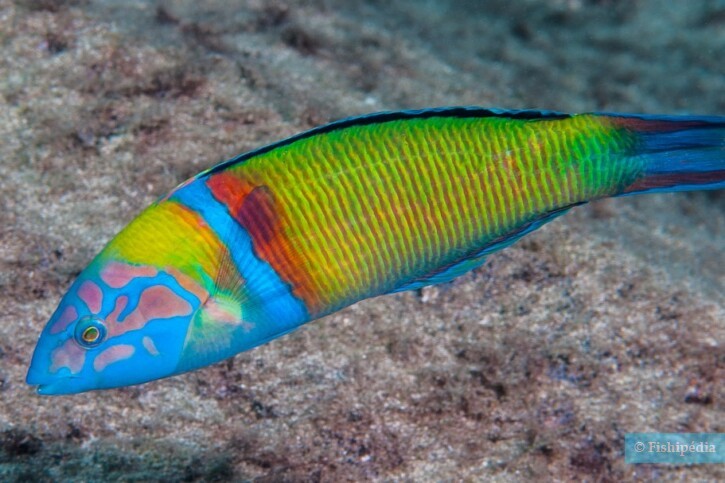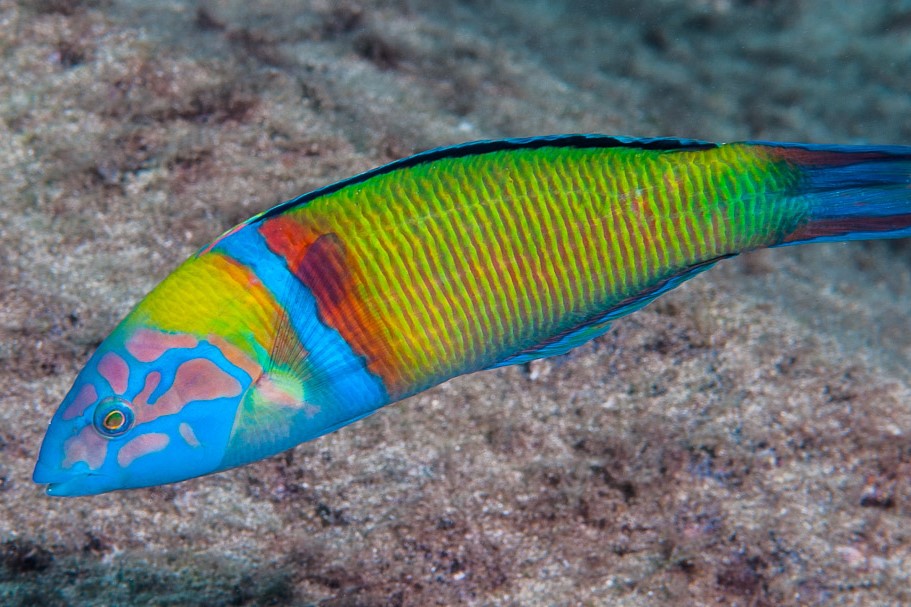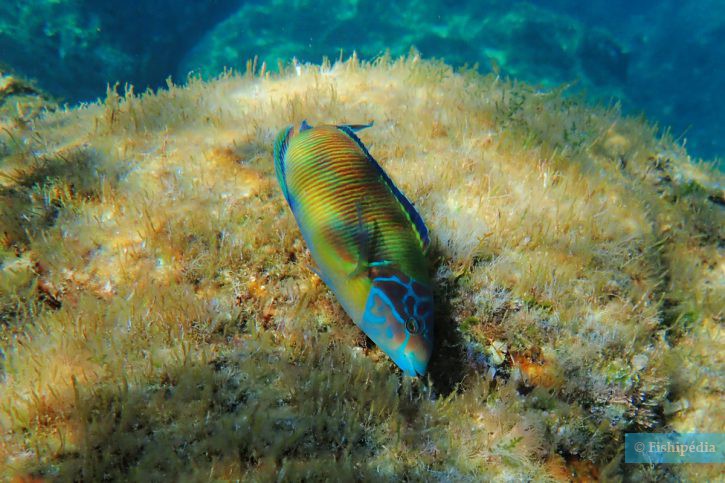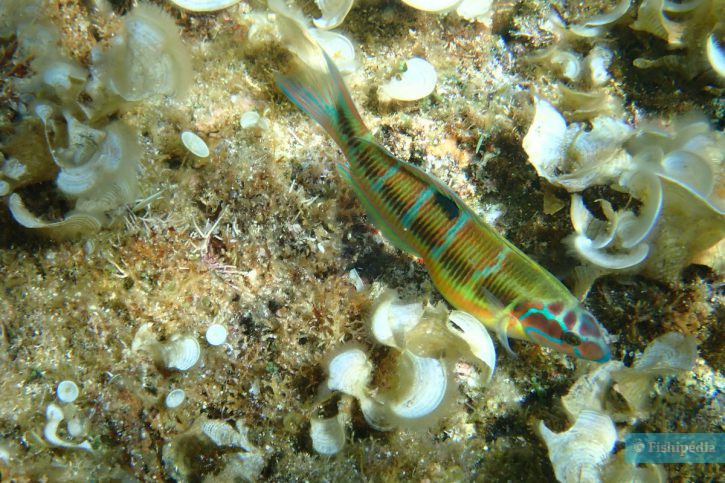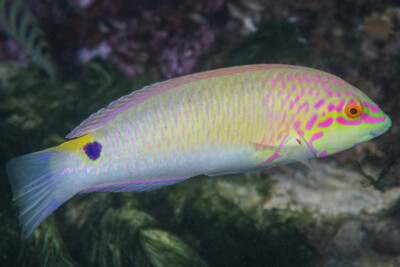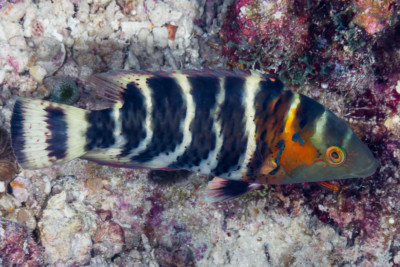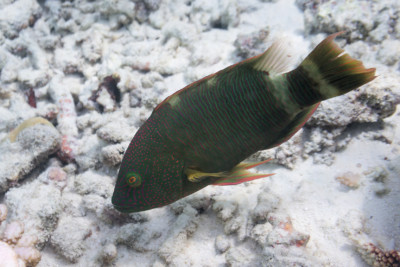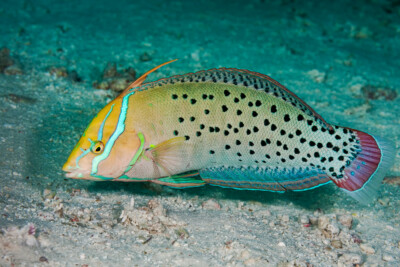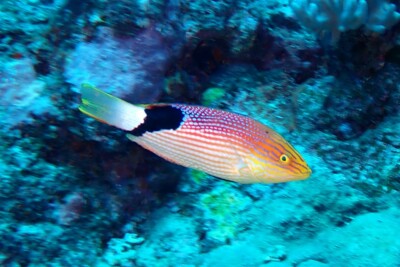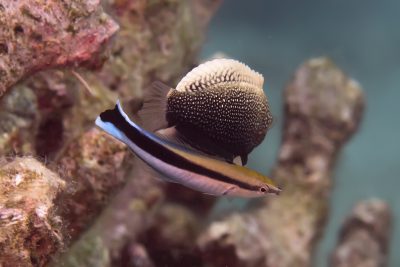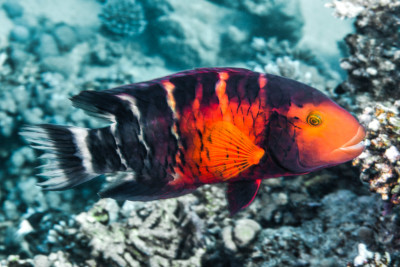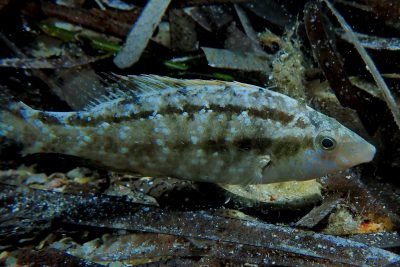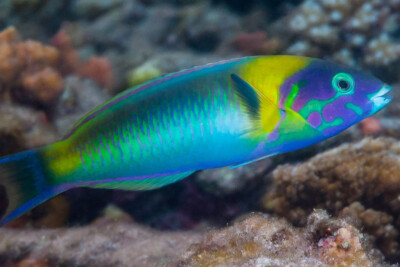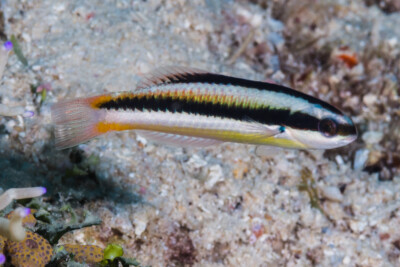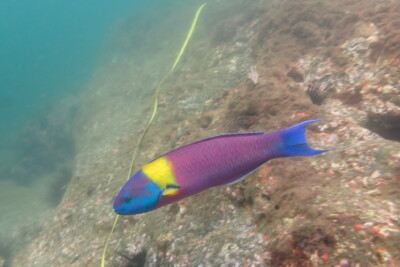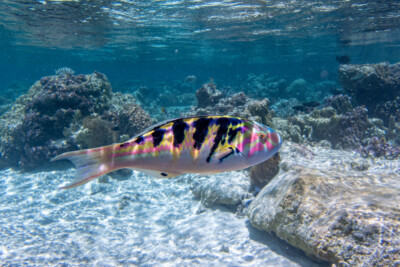Introduction
Thalassoma pavo, commonly known as ornate wrasse, is a salt water fish.
This sheet is currently being prepared. The texts currently proposed come from our data model or are being drafted. To request priority for this content, you can write to us HERE.
Who is it?
Morphology
-
Type
-
Average size20 cm
-
Maximum size25 cm
-
Longevity12 year
-
Type
-
Average size20 cm
-
Maximum size25 cm
-
Longevity12 year
How to recognize This fish ?
The ornate wrasse measures around 20 cm. The dominant males can however reach 25 cm. This fish is multicolore with a predominantly vert and orange body.
Sexual dimorphism
The adult male is bigger than the female.
Behaviour & Life cycle
-
dietomnivorous with carnivorous tendency
-
Sociabilitysolitary
-
territorialYes
-
Way of livingdiurnal
The ornate wrasse is a fish solitary naturally found near the bottom. This species is omnivorous with carnivorous tendency .
The ornate wrasse is a territorial animal that does not tolerate any incursions into its living area. It is particularly virulent against other territorial species and it can provoke heated fights. Relationships between conspecifics are also hectic, with each seeking to secure its place.
Reproduction
-
Reproductionovipare qui pond en eau libre
-
Hermaphroditeprotogynous
The ornate wrasse is a fish ovipare qui pond en eau libre. always born female. Growing up, individuals will change sex to become male, this is called successive hermaphroditism of the protogynous type.
Harmless species
This species does not represent any particular threats to humans when encountered in its natural environment.
Origin and distribution
What is its habitat?
Natural environment characteristics
-
Temperature18 - 22 °C
-
Depth1 - 25 m
-
FlowStrong and Medium
Biotope presentation
The ornate wrasse is most often found at a depth between 1m and 25m. However, it is not impossible to find this species at other depths.
Fishkeeping
Not recommended
We do not recommend keeping this species in an aquarium. It has unpredictable needs which, if not met, generate significant stress, potentially leading to a shorter life expectancy, an interruption of its growth or the development of pathogens.
To go further
Sources & Contributions
Participation & Validation
The Fishipedia team and specialist contributors are committed to providing high-quality content. However, although the information comes from scientific sources or testimonials from specialists, the cards may contain inaccuracies.

Benoit Chartrer

Théo Guillaume

Adrien Falzon
Translation
Translation done with the valuable contribution of our translators, who make this information available to a wider audience. We sincerely thank them for their commitment.
Bibliographic references
- - GBIF
- - Evolution of coral reef fishThalassomaspp. (Labridae). 1. Molecularphylogeny and biogeography - G. Bernardi - G. Bucciarelli - D. Costagliola - R. Robertson - J. B. Heiser - Marine Biology - 2003.
- - Tropical fishes in a temperate sea: evolution of the wrasse Thalassoma pavo and the parrotfish Sparisoma cretense in the Mediterranean and the adjacent Macaronesian and Cape Verde Archipelagos - Vera S. Domingues - Markos Alexandrou - Vitor C. Almada - D. Ross Robertson - Alberto Brito - Giacomo Bernardi - Marine Biology - 2008.
- - Abundance and size structure of Thalassoma pavo (Pisces: Labridae) in the western Mediterranean Sea: variability at different spatial scales - Paolo Guidetti - Carlo Nike Bianchi - Gabriele La Mesa - Milena Modena - Carla Morri - Giampietro Sara - Marino VACCHI - Cambridge University Press - 2002.
Scientific partners
Tags
Species of the same family
Same genus
